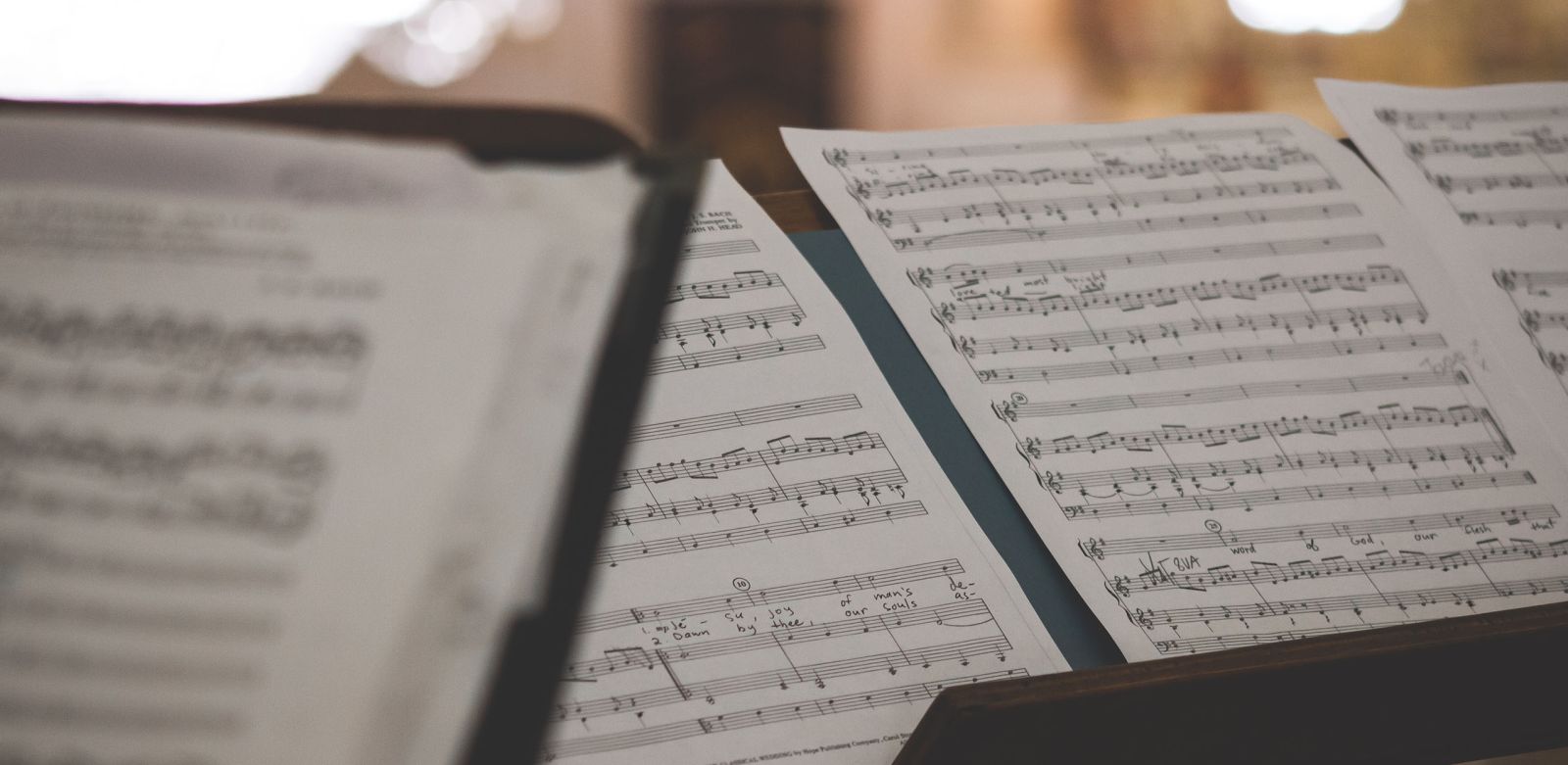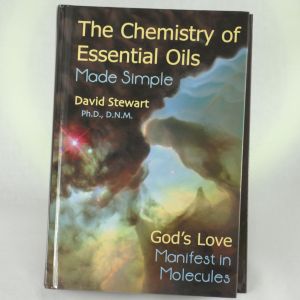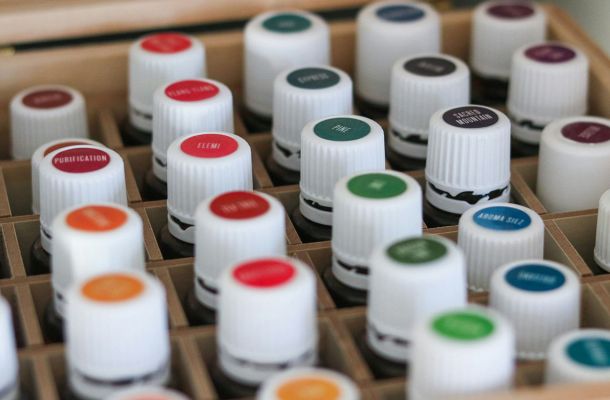This website uses cookies so that we can provide you with the best user experience possible. Cookie information is stored in your browser and performs functions such as recognising you when you return to our website and helping our team to understand which sections of the website you find most interesting and useful.
Harmonies Melodies and Symphonies with Essential Oils – Volume 11, Number 3
Please feel free to share this newsletter!


Raindrop Messenger
Official Newsletter of CARE
The Center for Aromatherapy Research and Education
12923 BCR 800, Marble Hill, Missouri USA 63764
(573) 238-4846
NOTE: The information in this newsletter is intended for education purposes only. It is not provided in order to diagnose, prescribe, or treat any disease, illness, or injured condition of the body or mind. Anyone suffering from any disease, illness, or injury should consult with a physician or other appropriate licensed health care professional.
Harmonies Melodies and Symphonies with Essential Oils
Originally Posted July – August – September Summer 2013
1. Harmonies, Melodies and Symphonies with Essential Oils
by David Stewart, PhD
Question. Which is best? (1) To apply oils sequentially one at a time in layers? Or to mix and apply them all at once as blends?
I could answer with a question: “What do you want? Melodies, Scales, and Arpeggios? Or Intervals, Harmonies, and Chords?” However, I will give you a detailed technical and scientific answer, but first we need some background in music theory.
WHAT IS PITCH?
Essential Oils are like notes played by an instrument. The pitch is a term referring to what note we hear on the musical scale. In the western world we break an octave of pitches into 12 tones: A, A#, B, C, C#, D, D#, E, F, F#, G, & G#. Playing all twelve of these notes sequentially is the “Chromatic Scale” of Western Music. (NOTE: It will help if you read this and the following paragraphs with a piano or keyboard in front of you in order to visualize the octaves and notes to which we will be referring and to see where harmonics come from.)
An octave is a pair of pitches where the higher one is double the frequency of the lower one. In the ancient Pythagorean Scale, Middle C is a frequency of 256 cycles per second or 256 Hz (Hertz). An octave above would be a C of 512 Hz and an octave below would be a C of 128 Hz. Below that would be a deep bass C at 64 Hz–two octaves below Middle C and approaching the bottom limit of the human voice.
NOTE: We don’t use the Pythagorean Scale any more in our music, but rather we use the modern “Tempered Scale” with an International Standard Pitch of A above Middle C at 440 Hz. This makes today’s middle C to be 261.626 Hz. To explain the things that follow here, it is mathematically much simpler to use the middle C of Pythagorus to make our point, since 256 Hz for C is a nice integer number and we can avoid decimals. 256 is a perfect square of the number 16.
C is the pitch we hear when the appropriate key or string is played on a piano, or a violin, or a trumpet, or when sung by a human voice. But even though it is the same pitch, we can easily distinguish between a C played by a piano from one played on a violin or a trumpet or sung. In fact, if five people all sang the same pitch, we could tell one singer from another. How is that?
FUNDAMENTALS, HARMONICS, AND TIMBRE
When a specific pitch or frequency is sounded by instrument or voice, there is actually a whole spectrum of frequencies produced. We hear the lowest frequency as pitch, which is called the “fundamental.” We hear all the higher pitches, too, but they don’t register with our ears as tones of identifiable pitch, but as “color.” We can tell the sounds of different instruments or singers from one another because they each have different “colors” to their tones. These higher vibrations are called “harmonics” or “overtones.” The color rendered with the fundamental pitch by the harmonics is called “timbre,” which is pronounced “tom-burr.”
Because the assortment and amplitudes of the harmonics that accompany a fundamental tone are different for each source of sound, we can tell one instrument from another and one human voice from another. Thus, a bell sounds different than a clarinet, and Tom sounds different than Bruce, even when they are ALL on the same pitch.
For example, when you sound a bass C, two octaves below Middle C, on any instrument, such as a piano, there will be a low fundamental note heard as the pitch at 64 Hz, but there will also be a vibration of the next C up at 128 Hz and the C above that at 256 Hz. There will also be the Cs above that at 512 Hz and 1024 Hz. In addition, there will be vibrations of 192 Hz (the G below Middle C), as well as vibrations of 320 Hz, 384 Hz, and 448 Hz, which are E, G, and B in the octave above Middle C. On top of that there will also be vibrations at 576 Hz, 640 Hz, 768 Hz, and 960 Hz which are, respectively, the D, E, G, and B in the second octave above Middle C. There will also be vibrations of 704 Hz, 832 Hz, and 896 Hz that do not correspond to any of the twelve notes of the chromatic scale, but fall between the notes of that octave, notes that we don’t use in Western music and which have no Western names.
So you can see that when you sound a low C on a piano, two octaves below Middle C, you not only hear the fundamental of 64 Hz, but you also get at least 15 other higher frequencies sounding simultaneously in more than four octaves above. The amplitudes of these harmonics are less than the amplitude of the fundamental so that the pitch is not obscured, but we do hear the whole mix of 16 or more frequencies and recognize the instrument immediately as being a piano, and not a tuba or a bassoon.
The unique, haunting and hollow sound of an oboe is because its tones have harmonics almost as loud as the fundamental. But that’s enough music theory to make my point with oils.
HOW DO ESSENTIAL OILS MAKE MUSIC?
Essential oils all emit a spectrum of frequencies that come from the bonds between elements comprising the molecules of their compounds. Each molecule is like a tiny stringed instrument where the bonds between the atoms of carbon, hydrogen, and oxygen act as strings of different pitches, just as a guitar or a harp has several strings of different pitches each with harmonics and overtones of their own.
Among the numerous frequencies of the molecules in an essential oil will be a fundamental which can and has been measured for a number of essential oils. The range of fundamental frequencies that have been measured for essential oils ranges from 52 to 320 MHz. For example, Basil has been measured with a fundamental of 52 MHz, Lavender at 118 MHz, and Rose at 320 MHz. Vibrating at the same time with the fundamental frequency of an oil is also a range of harmonics. Hence, the application of an essential oil is like playing a musical note complete with a fundamental and all its overtones.
When musical notes are played in a sequence, one after the other, we get melodies, scales, and arpeggios. Hence, when we anoint with different single oils one at a time, one after the other in layers, we are playing tunes.
When we play two different musical notes together, that is called an “interval.” For example most automobile horns consists of two pitches sounded together to form an interval. This interval is usually a perfect fourth or a minor third. The first two notes of the Bridal Chorus, “Here Comes the Bride” are a perfect fourth but in this instance, they occur in sequence as the opening notes of the melody. The first two notes of the theme to “Phantom of the Opera” are also a perfect fourth. The first two notes of America’s National Anthem (“Star Spangled Banner”) is a minor third. Beethoven’s “Minuet in G” opens with a series of intervals that are all thirds.
When we play more than two notes together at the same time, that is a chord. The first three notes of Dixie, “Oh I Wish I was …”, would be a tonic chord or major triad if played together. The first three notes of the “Star Spangled Banner” also form a major triad if the notes were played simultaneously.
The original question at the start of this article is: Which is Best? Applying oils in layers one at a time in a sequence or applying several species all at once as blends or mixes. And how would you know which way to anoint yourself or another in any given instance? The short answer to the question of “Best,” is that neither is best. They are just different and both ways can be the best in the appropriate circumstances.
THINK OF OILS AS NOTES WITH PITCH, TIMBRE, & VOLUME
Consider this. Think of each species of essential oil as vibrating like a musical note sounded by a particular instrument. It will have a fundamental, a basic frequency, or pitch. At the same time, since it composed of hundreds of compounds each with a spectrum of frequencies, there will hundreds of harmonics or overtones creating a timbre. Some oils are like trumpets. Some like violins. Some like flutes or bassoons. Some instruments are naturally loud while some are naturally soft.
The amount of oil applied determines its amplitude or volume. While some oils, like Oregano or Thyme, are naturally loud, can overpower other oils, and require only a little to produce the desired volume. Other oils, like Myrrh, are naturally soft and play well with others without drowning them out. Myrrh is used to accompany many ointments and perfumes without upstaging the other ingredients.
The multitude of frequencies above its fundamental within an essential oil are what gives a specific species its personality, its color, and its timbre. The spectrum of frequencies represents the many possibilities available through that particular oil, only some of which will manifest for a given application depending on the need and the desire.
A specific species of oil will produce different therapeutic effects on different people, partly because different people have different chemistries of their own that react differently with a given oil. But also we know, through quantum physics, that the determination of which possibility an oil will manifest for a certain person in a certain application is also determined by their intentions, their faith, their beliefs, and their desires. The intent of the person applying the oil is also a factor in picking out which of the many possibilities an oil will exhibit for a given healing. Of the many harmonic and overtone frequencies within an oil, and depending on the fundamental frequency, the possibilities that will manifest will be those that resonate with the intentions of the giver and the receiver of the anointing.
COMPOSING & PERFORMING MUSIC WITH OILS
How the oils are applied determines the form of music that you create, just as how notes are played or combined, from all of the pitches and timbres available, determines the nature and style of the music that results.
You can see that applying one single oil after another is like playing notes in a sequence, which can be a melody, a trill, a scale, or an arpeggio. Applying two single oils together forms a musical interval while applying a blend three or more oils is playing a chord. Applying single oils quickly, one after the other, would be a faster tempo that applying them slowly with waiting intervals in between.
Melodies are more focused, like a fine tipped pen, but with a light touch, which appeals more directly to the heart and would be more effective with maladies that are restricted to a certain area in the body. Melodic applications of oils usually imply the use of single species, one at a time or in layers.
Chords and harmonic intervals are more broad, like a wide tipped marker, with a heavier impact which appeals more directly to the brain and would be more effective with maladies that affect larger more general areas of the body. Polyphonic applications of oils imply the use of blends with mixtures of species applied all at once.
In emotional release work with essential oils, we use many single oils applied one at a time which can zero in on specific emotions lodged in specific tissues that need addressing. These are oils like oregano, cedarwood, lavender, or hyssop.
But we also apply blends during emotional releasing which address one’s whole being and personality. Blends bring strength, courage, and integration to the process. Emotionally beneficial blends can be oils like Valor, Forgiveness, Harmony, Release, Transformation, Three Wise Men, Believe, Magnify Your Purpose, and Highest Potential.
In a therapeutic application for conditions that affect the whole body, or a major system of the body, we often use other blends like Thieves, RC, ImmuPower, or TraumaLife.
CONCLUSION
While the above discussion is intellectually interesting, and stimulating to the left brain, it may not be practical or helpful in the moment when making a decision on which oils to use and how for a person in need of healing right now. While intuition with oils works best when one has acquired a certain level of intellectual information and knowledge about essential oils, during moments engaged in the actual practice of healing and anointing, our left brains are usually not as useful as our right brains, and can even get in the way.
In the end, there is no substitute for an intuitive, right brain, prayerful approach to anointing with oils for healing purposes. By approaching an anointing and the laying on of your hands in faith, with an attitude of humility, in the conviction that God is your ever-present guide, you can always know which oils to apply and how to apply them. God’s healing power can come through us and through the oils better, sometimes, when the left brain is temporarily suspended and stands not in the way of an uninhibited flow His energy.
Nevertheless, it is helpful to know that we do play music when we anoint ourselves or others with essential oils. The music happens whether we know it or not, with the oils singing songs in harmony to our souls. That is a fact. An assortment of oils, whether considered separately or in a blend, is an ensemble of musical instruments, like an orchestra or a band.
When we do a Raindrop on someone, we are playing melodies, intervals, and chords for about an hour, thus creating a beautiful symphony that heals and balances the body, mind and soul. Raindrop Symphonies are experienced by both the receiver and the giver, but from different places in the Concert Hall–one from a seat in the auditorium and the other on stage in a chair with the orchestra.
So the next time you apply essential oils on yourself or on others, think of it as composing and performing a rhapsody of healing music to which the body, mind, and soul can respond as you would in experiencing a fine concert.
~^~^~^~^~^~^~^~^~^~^~^~^~^~^~^~^~^
2. The Frequencies of God’s Voice and Those of Oils
by David Stewart, PhD
We recently received an email from Marty Kearney, a Young Living Distributor in Michigan. She had encountered a church musician who attempted to ridicule and discredit the idea that essential oils, plants, and people contain frequencies outside of the range heard by the human ear. He tried to argue that God communicates to us, and sends his blessings to us, only in the audible range of ordinary sound and that, therefore, if essential oils really do offer healing vibrations to people, they cannot possibly have the high megahertz frequencies reported in such books as the “Reference Guide for Essential Oils,” by Higley, and “Healing Oils of the Bible,” by Stewart.
While we can actually hear frequencies as sound from 10 Hz to 20,000 Hz (cycles per second), the range of frequencies for the notes in which music is composed for the human ear, is mostly from 15-10,000 Hz. As a musician, this individual could not believe that frequencies in the Megahertz range (millions of vibrations per second) could exist in any living life form or that oils extracted from plants could manifest such high frequencies.
Given below is the query we received from Marty, including the musician’s comments and arguments to support his assertions:
Hi,
I don’t know if this question can be directed to Dr. Stewart, but I recently posted a graphic on facebook about frequencies and how essential oils have the highest. I also posted the following information from the Higley guide (2012 edition), which is also in “Healing Oils of the Bible“:
“Essential Oils carry the highest frequencies of any natural substance, as shown in the data below:
- Fresh produce up to 15 MHz
- Dry herbs 12-22 MHz
- Fresh herbs 20-27 MHz
- Essential oils 52-320 Mhz”
I then had someone, who is a musician, challenge me about the above information who said the following:
“One MHz denotes one million hertz, or one million cycles per second, and also equals 1,000 kilohertz (KHz). To have a living organism producing such a frequency is really out there . . . It’s called resonant harmonic’s, which to my understanding, does not appear in the natural realm. God made man to worship, and his worship was contained in the audio arena. Worship using the audio freq range matches God’s MO. He always uses the lowest thing to reveal himself. In this case the lowest frequency is the audio freq.”
So my downline sent me an article entitled, “Human Electrical Frequencies and Fields” by Gary Young published in 1996, where he mentions the frequencies of essential oils in Hz instead of MHz That contradicts what is found in Higley’s and Stewart’s books. I then sent a copy of Dr. Young’s article to the church musician who was challenging me and he replied back saying:
“Great how the example you provided is in what we call the audio frequency. Thanks Great link! The frequencies they show, in the article you shared with me, fall into the audio range, which is what I suspected.
“Everything that is ‘alive’ and remains in an unaltered state, emits a frequency and those are all found in the Audio Frequency range which lines up with scripture. Luke 19:37 ‘And when he was come nigh, even now at the descent of the mount of Olives, the whole multitude of the disciples began to rejoice and praise God with a loud voice for all the mighty works that they had seen.’”
Thusfar, no one has really answered me for sure on this, and as to why what is printed in the “Higley guide” and “Healing Oils of the Bible” differs from what is in Dr. Young’s article and other articles I have searched.
If Dr. Stewart or someone can explain this it would be greatly appreciated.
Thank you for your help!
Marty Kearney
Here is my reply:
Dear Marty
The musician challenging your statements on frequencies is wrong and uninformed on the subject of frequencies and does not understand God’s ways of communication with His people. He is speaking from the perspective of very limited actual personal contact with God and with an incomplete and inaccurate scientific knowledge of frequencies.
For him to say, “Worship using the audio freq range matches God’s MO. He always uses the lowest thing to reveal himself,” ignores Genesis 1:3 where God said “Let there be light.” The frequencies of visible light are measured in hundreds of billions of cycles per second, which is certainly well above the audible frequencies of sound, which are measured in tens, hundreds, and thousands of cycles per second. God can, does, and has always communicated with his children by way of light, as well as by sound and by other ways. God’s contact and communication with us is certainly not limited to “the lowest thing,” as your musician asserts.
I, too, am a trained musician, and also a former piano teacher. I am also a regular organist in my home church. I have engaged in a thorough study of the frequencies of music, the human body, and essential oils for many years. My doctor’s degree is a mathematical treatise in frequency analysis which, during my graduate studies and subsequent research as a university professor, was applied to ground vibrations and earthquakes. I have also engaged in acoustical engineering for the design of a church sanctuary for maximum clarity of sound.
God speaks to us through a very broad range of frequencies, both audible and inaudible, both visible and invisible, both sensible and those we cannot sense or feel. Virtually every aspect of His creation contains, and is composed of, many frequencies from the lowest ranges, the audible ranges, to the ultra high ranges–like X-rays, Gamma Rays, and Cosmic Rays.
The article by Gary Young you sent to your musician friend is excellent and very informative on several topics, but it contains some errors, which have to be typos that Gary and his editors did not catch. The typos have to do with reporting the frequencies of essential oils in Hz when it should have been MHz. Of course, this mistake gave the musician exactly what he wanted to hear, that oils do not vibrate in megahertz, but in hertz, which are the audible frequencies. He did not know that the values you had given him in that article were wrong. So you might want to send him a corrected copy of Gary‘s article. But first, let’s define the term, “Frequency,” which is often confused and misunderstood.
WHAT IS FREQUENCY?
Frequency is the number of times something repeats itself in a given interval of time. For example, “24 hours per day,” is a frequency repeated daily. “7 days per week” is another frequency we experience over and over, 52 times a year. Our hearts also beat in a frequency which, for a normal adult at rest, ranges from 60 to 80 beats per minute. Except for the “thump, thump . . .” of your heart, none of these examples are audible frequencies, heard as pitch or notes on a musical scale.
Hz or Hertz is the scientific term for a unit of frequency and stands for “cycles per second” or “cps.” MHz, or Megahertz, means “a million times per second.” GHz, or Gigahertz, is “a billion times per second.” And THz, or Terahertz, is “a trillion times per second.” THz is the same as MMHz, or Megamegahertz. The frequences of our bodily organs and tissues range from Hz to MHz while the frequencies within the cells and molecules in our bodies and the molecules of oils range from MHz to GHz and even to THz.
Your musician friend was pleased to see that the copy of Gary’s article you shared seemed to confirm his hypothesis that God only functions in the “audible range,” as measured in Hz. However, unknown to him (and also to you at the time) was that Gary’s article is in error on the magnitudes of the frequencies given for essential oils. They are off by a million. The frequencies of oils are not measured in Hz, as the copy of the article erroneously said, but in MHz, which are far above the audible range.
Gary Young knows very well that essential oils vibrate in millions of cycles per second, not in Hz. The errors in that copy of his article can only be typing mistakes that were not caught by him or his proofreaders. Apparently, over the years some other writers have quoted the erroneous numbers from Gary’s original article, without recognizing them to be wrong, so that this mistake has been promulgated into several other publications to the present day. Thus, the mistake has been perpetrated. So if you encounter an article presenting essential oil frequencies in Hz, you can know it should be MHz and they are probably quoting the article with a typo published in 1996
WHAT IF THE FREQUENCES OF OILS WERE AUDIBLE?
Here is how you can know for certain that essential oils do not vibrate in the audible Hz range. If they did, we could hear them singing from the bottle, note them humming in our diffusers, and feel their tickling tones on our skin. When inhaled they would fill our heads with a cacophony of many sounds. Of course such sounds are not heard from oils because they do not vibrate at the frequencies within hearing range. Yet essential oils do communicate with us and our bodies, and we communicate with them, too, but not through the audible frequencies of voice and music. Rather we communicate by thoughts, intentions, and feelings, which are much higher frequencies and to which oils can respond.
For human hearing, we hear from about 15 Hz to 20,000 Hz as pitches from low to high. Vibrations less than 15 Hz are not usually heard as pitches, but as deep buzzing sounds or individual beats, like our hearts which throb a little over 1 Hz, slightly over one beat per second. The lowest note on a piano is 27.5 Hz, which is an A just below three octaves below Middle C. Officially, the frequency of Middle C is 261.626 Hz for the Tempered Scale we use today and 256 Hz for the ancient Pathagorean Scale. The highest note on a piano is a very high C, four octaves above Middle C vibrating at about 4000 Hz. I used to be a piano tuner.
Every atom and every molecule vibrates with a spectrum of frequencies in the MHz range, which is the range of radio waves, which are inaudible to humans. The human voice vibrates at KHz and below. The vibrations of the electro-magnetic bonds of individual essential oil molecules are in the THz or MMHz range, which is trillions of vibrations a second. (For more information on this, see Chapter Six in my book, “The Chemistry of Essential Oils Made Simple.”)
Essential oils are composed of hundreds of compounds, each with its molecular spectrum of frequencies. When all added together, the oil, as a whole, will manifest a fundamental frequency which will be in the MHz range. There will also be a series of harmonics in the oil that reach up into the GHz range and above.
HIGH FREQUENCES ARE INTEGRAL TO ALL LIFE
For your musician friend to say, “To have a living organism producing such a frequency (MHz) is really out there. . .” is not only a statement of doubt, but a statement of ignorance. Such high frequencies are intrinsic to the normal processes of all living things. Living organisms broadcast, receive, and employ many frequencies in the MHz range, and do so constantly and continuously as a matter of the the way living things exist and maintain themselves. It was God who planted these high frequencies in all plants, animals, and people as part of their intrinsic makeup and function.
While I agree with the musician that “God made man to worship,” it is not only through music and sound in the audible range that we worship, as the musician seems to be saying. We also worship through subtle vibrations expressed as love, peace, joy, wisdom, adoration, gratitude, forgiveness, harmony, and prayer, etc. All of these attributes are expressed and characterized as vibrations with inherent frequencies. Our bodies and minds are constantly broadcasting and receiving vibrational energies that either glorify God or not, that either resonate harmoniously to receive God’s graces or not. Our thoughts and feelings are vibrations sent to God, just as we send our audible words of praise, singing, and the offerings of music. These things are in the ultra-high frequency realms, far above the range of sound audible to human hearing.
We either resonate with God and perceive his constant loving omnipresence, or we vibrate out of phase and out of range with Him and perceive Him not. Thus, the atheist says “There is no God,” but where and how is he or she looking? If you don’t tune into the right frequencies with the right equipment, you won’t find any radio stations. But such a search is not justification for saying, “There are no radio stations.”
To say, like your musician, that “God always uses the lowest thing to reveal himself” and “In this case the lowest frequency is the audio freq.” is totally false. God uses all things, high and low, to reveal himself and audio frequencies are not the lowest frequencies he uses. Most of our communications from God are not audible and are not “the lowest.” In fact, they are usually the highest frequencies, well above the physical sense of hearing or physical feeling. Divine Communication is something discerned by the Spirit, not usually by our physical body and its senses. Most communications between us and God are at frequencies higher than those that can be measured by material means.
People who have not developed a close relationship with God, that includes conversations and two-way communications, do not believe those of us who do have such a relationship. To believe and accept the existence of such a relationship, one has to have one. Perhaps your musician friend’s statement that “God always uses the lowest frequencies,” is a reflection of the narrow extent of his experience and of his limited relationship with God, not a reflection of the boundaries of God himself, who has no limitations.
His quote of Luke 19:37 to support his thesis that God only operates in the “audible range,” does not support his thesis at all. This New Testament quote is describing the triumphal entrance of Jesus and his disciples into Jerusalem, which we Christians celebrate today as “Palm Sunday.” To try to imply that the audible praise, shouting, and singing that Jesus received from the throng that greeted him is scriptural evidence that God only functions with us in the audible range is a non sequitur, a conclusion that does not follow from the premise.
The crowd praising Christ that day felt something in their hearts, a joy and a love of a much higher frequency than sound, that prompted their ecstatic response to the visible presence of the Savior. Their audible expressions were reflections of a much higher vibration within their spirits in response to the high vibrations emanating from Jesus, himself.
WHAT IS THE FREQUENCY OF GOD’S VOICE?
As for God communicating with us, I believe the frequencies of God’s voice can be any and all frequencies, from the highest to the lowest. What we receive and perceive depends on the bandwidth of our receptivity. The more expanded we are in our attunement with God, the more aware we become of his presence everywhere, and the more avenues He has to communicate to us and with us.
The audible range of vibrations is a very narrow bandwidth. Neither God nor essential oils can be restricted to that slice of the frequency spectrum. We can choose to restrict ourselves to receiving God only in a narrow range and, by our thoughts and attitudes, we can restrict ourselves to what we can receive from God’s oils, too. In that case, we can only receive a tiny portion of the limitless blessings and graces God intends for us to receive. That is my opinion and my belief.
So there is your answer to the issues raised by the musician concerning frequencies. It is also an answer and clarification as to why there is a discrepancy between the oil frequencies cited by “Higley’s book” and “Healing Oils of the Bible” and those given in Gary Young’s 1996 article which have been repeated in a number of subsequent articles to the present day.
Thank you for bringing this to my attention. I will be interested in hearing from you on the response of the musician to my comments. I will pray that his personal bandwidth will increase as a result.
David Stewart, PhD
THE RAINDROP MESSENGER
Official Newsletter of CARE
The Center for Aromatherapy Research and Education
12923 BCR 800, Marble Hill, Missouri USA 63764
(573) 238-4846
NOTE: The information in this newsletter is intended for education purposes only. It is not provided in order to diagnose, prescribe, or treat any disease, illness, or injured condition of the body or mind. Anyone suffering from any disease, illness, or injury should consult with a physician or other appropriate licensed health care professional.
The Care Calendar
Topics covered in the Raindrop Messenger:
- 10 Reasons to Learn Raindrop
- Acid Reflux
- Advanced Bible Oils
- AFNOR
- Allergy Season
- Allopathy
- ALOES/SANDALWOOD
- Ancient secrets of essential oils
- Annual CCI Summit
- Anointing
- Aroma Life
- Aromatherapist
- Aromatherapy
- Aromatherapy Certification
- Arthritis
- Believer
- BIBLE OILS
- Biblical Oils
- Birch Oil
- Black Widow
- Blue Chamomile
- Body Systems
- cancer
- CARE Chemistry
- CARE Classes
- CARE INTENSIVES
- CARE Seminars
- CARE Summit 2024!
- CARE training
- Carvacrol
- CCI Certification
- CCI Summit 2024
- CEDARWOOD
- Center for Aromatherapy Research and Education
- Chakras
- Charging for Raindrop
- Chemistry
- Chemistry of Essential Oils
- Chemistry of Essential Oils Made Simple
- Chemotypes
- cleanses
- Clover
- Continuing Education Credit
- CYPRESS
- Dangers Of Prescription Drugs
- Detoxifiers
- Developing Gratitude
- DI GIZE
- DIAMOND
- Do All You Can
- Earthquakes
- Education
- Elderberry
- ELECTROMAGNETIC FIELD
- EM FIELD
- Emotional Release
- Energize
- ENZYMES
- Essential Oils
- ESSENTIAL OILS FOR INTUITIVE PURPOSES
- Essiac tea
- Exodus Supplement
- Feelings Kit
- Flu
- Focus
- Frankincense
- FREQUENCES
- GALBANUM
- Garlic
- Gary Young
- German Chamomile
- Ginger
- Goals
- god's love
- Gold
- Gold Frankincense Myrrh
- Grapefruit
- Growth
- Habits
- Harmonies Melodies & Symphonies with Essential Oils
- Heal Your Body
- Healing
- Healing Oils Of The Bible
- Helichrysum
- HERXING
- History of Anointing Oils
- Holy Anointing Oil
- Holy Incense
- Homeopathy
- Homeostatic Intelligence
- HYSSOP
- IASP
- Institute for Energy Wellness Studies
- Integrated Aromatic Science Practitioner
- Joy
- laughter
- Lavender
- Learn Raindrop
- Lee Stewart
- Legal
- lemongrass
- linen
- Liver
- Look Ahead.
- Lora Lee
- Love
- Lyme Disease
- Mind-Body Connection
- Mint
- Myrrh
- Myrtle Oil
- NAT
- Natural
- Natural Molecules
- Neuro-Auricular Technique
- never give up
- new age
- Ningxia
- Ningxia Red
- Non-Nutritive
- Nova Vita
- Ocotea Oil
- Oils of ancient scripture
- Onycha
- ORAC SCALE
- Oregano
- Oregano oil
- Overcoming Diabetes
- patchouly
- Peruvian Chocolate
- Pest Control
- pheromones
- phosphoric acid
- Photoxicity
- POO-ROMATHERAPY
- Practitioner
- Preparation
- Protocel
- Pure Therapeutic Grade Essential Oil
- Quantum Physics
- Raindrop
- Raindrop certification
- Raindrop Classes
- Raindrop instructors
- Raindrop teachers
- Raindrop Technique
- Raindrop Technique Training
- Raindrop Training
- Raindrop Without a License
- RC Blend
- ringing in the ears
- Rose Essential Oil
- ROSE OF SHARON/CISTUS
- Rose Oil
- Safe Insect Repellants
- scar-b-gone
- Science Of Essential Oils Made Simple
- Sensitivities to Essential Oils
- sick building syndrome
- SPIKENARD
- Stay Positive
- staying healthy
- Success
- Supervisor Training
- Synthetic Compounds
- tansy
- Tea Tree
- The Blood Brain Barrier
- the Ecuador Clinic
- THE FIRST IMPRESSION TECHNIQUE
- the Mind-Body Connection
- THE PRAYER OF JABEZ
- The Quantum Connection
- THE SLEEP TECHNIQUE
- Therapeutic Grade
- Thieves Household Cleaner
- Thieves Oil
- Thyme
- Thyme Oil
- Tinnitus
- Tonya Peterson
- Transformation
- Transformation Oil Blend
- Twelve Questions to Ask Those Who Invite You to Join Another Company
- unresolved emotions
- valor blend
- Vitaflex
- water
- Wealth and Spirituality
- Wintergreen
- Wolfberries
- Ylang Ylang
- YLEO
- Young Living business
- Young Living Essential Oils
- Young Living Oils and Products
Shop this issue of the Raindrop Messenger
Read more issues of the Raindrop Messenger
In each issue of The Raindrop Messenger you will find articles and essays on a variety of topics related to health and longevity. Our hope is to be informative and, perhaps, inspiring to you for the benefit of your physical, mental, social, emotional, and spiritual life. The Raindrop Messenger is also a friendly way of keeping you abreast of CARE’s ongoing programs, activities and helpful books and videos.
The articles published in The Raindrop Messenger and in this archive are not copyrighted. You are encouraged to copy them, reprint them, and share them with friends. We would appreciate acknowledgment of their source by a statement to the effect.
By submitting this form, you are consenting to receive marketing emails from: The Center for Aromatherapy Research and Education. You can revoke your consent to receive emails at any time by using the SafeUnsubscribe® link, found at the bottom of every email. Emails are serviced by Constant Contact

I JUST WANT A RAINDROP!
Have a facilitator contact you!
The Center for Aromatherapy Research and Education, Inc. (CARE) and it's Certified Instructors have trained hundreds of Facilitators in the Raindrop Technique. Click here to get started.

Center for Aromatherapy Research and Education is approved by the National Certification Board for Therapeutic Massage and Bodywork (NCBTMB) as a continuing education Approved Provider.
CARE International Inc
12923 BCR 800
Marble Hill, MO 63764
Toll Free (800) 758-8629
Fax (573) 755-0365
Open 9:00 AM to 4:30 PM CST
Monday - Friday




